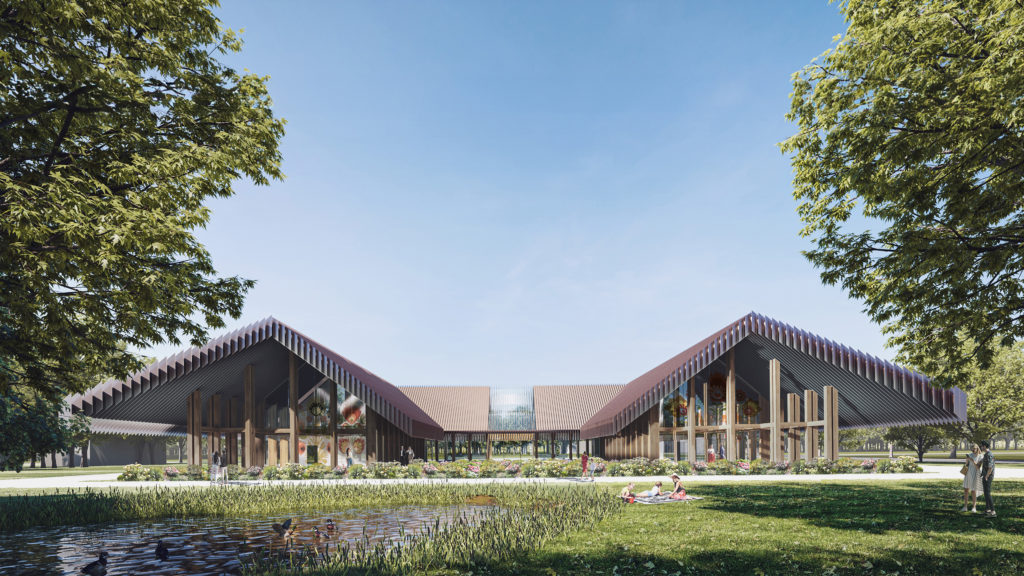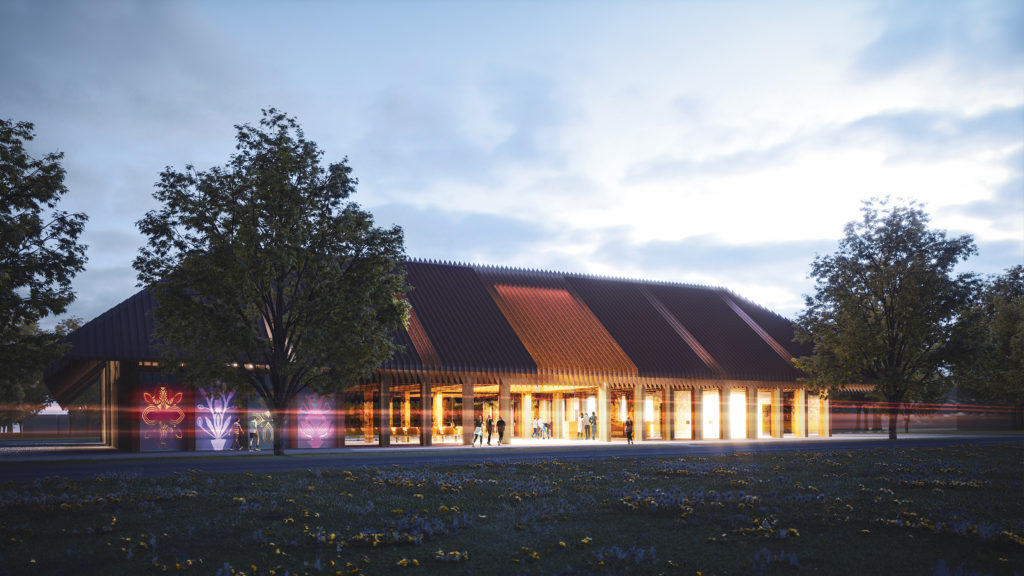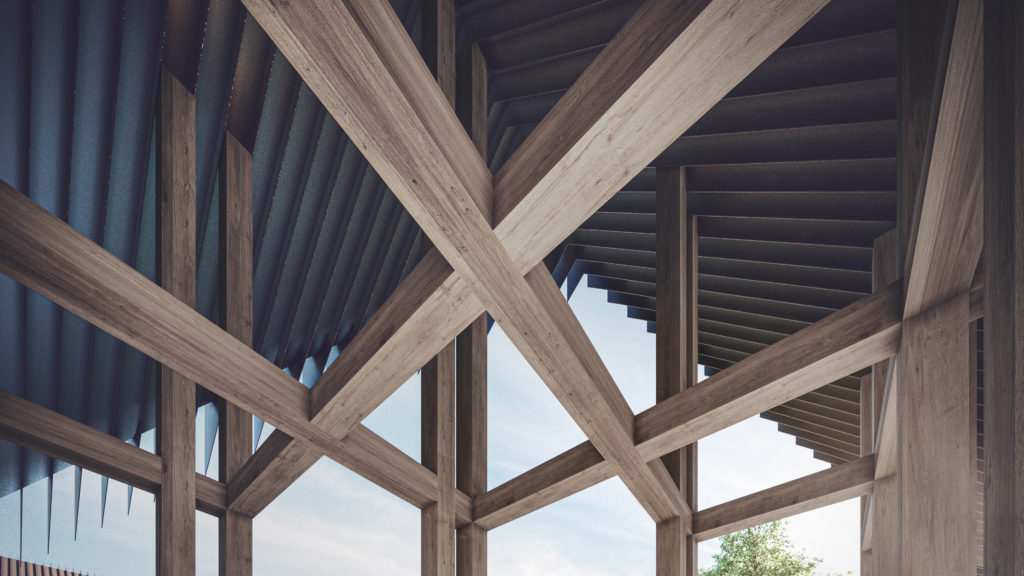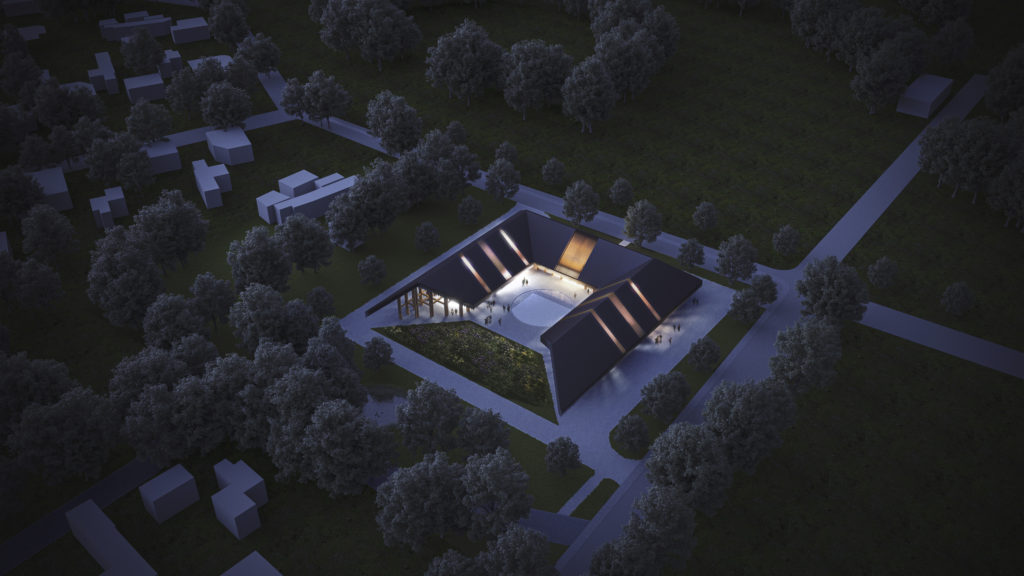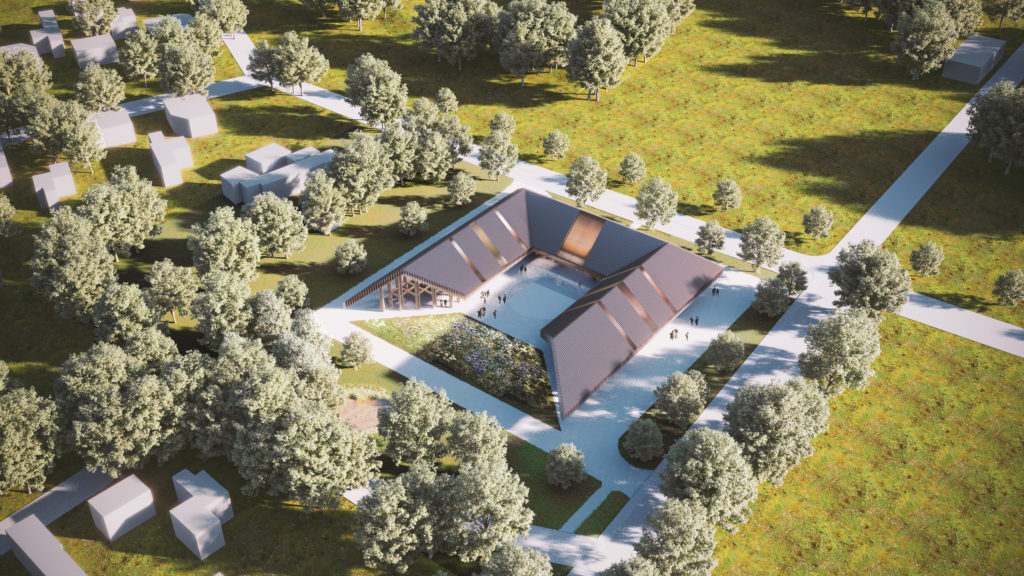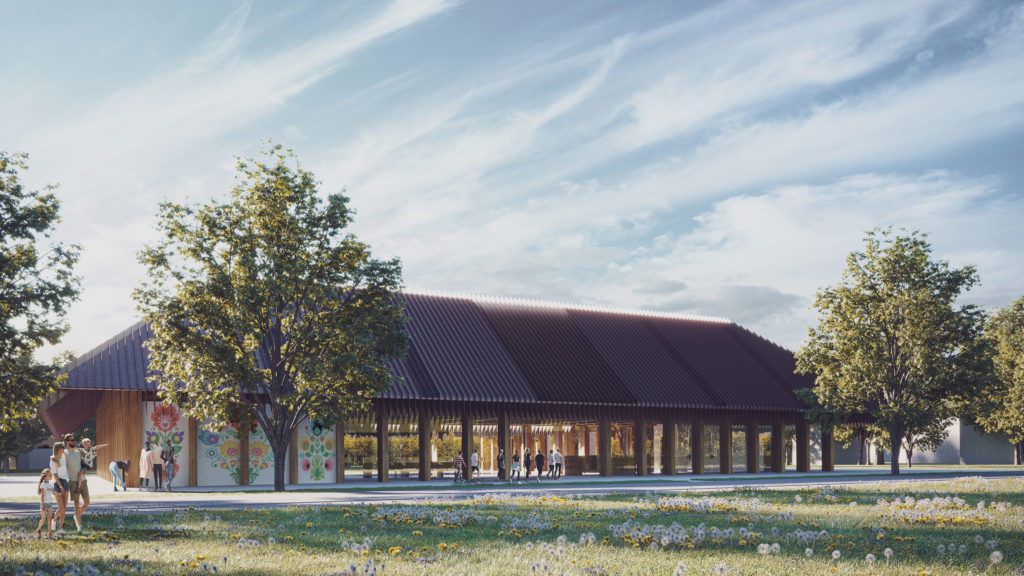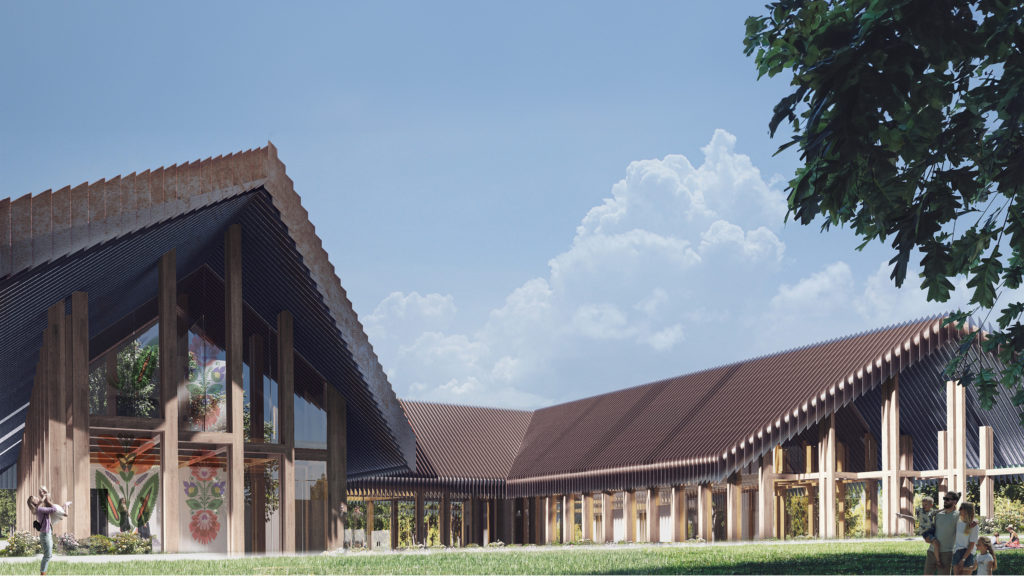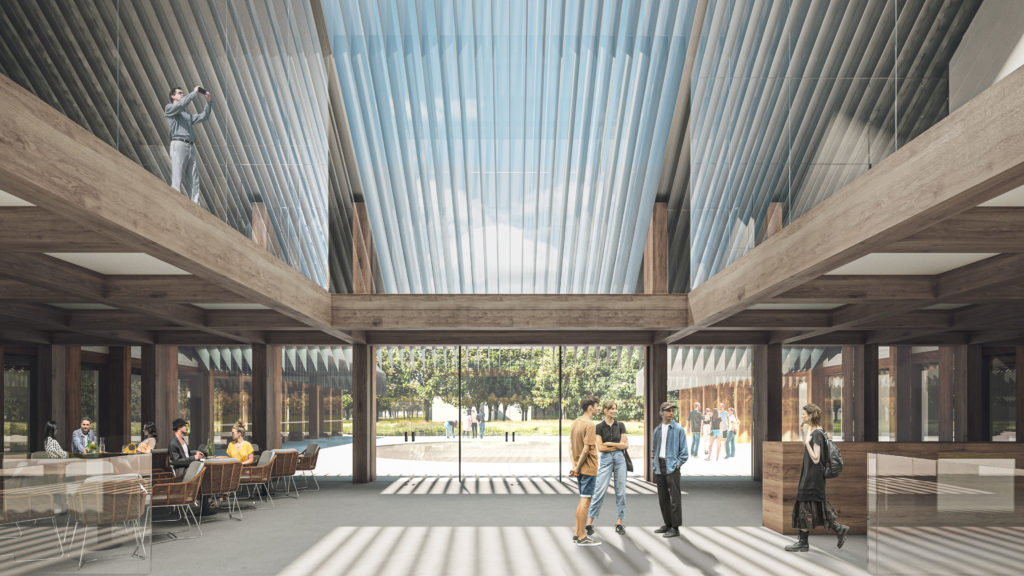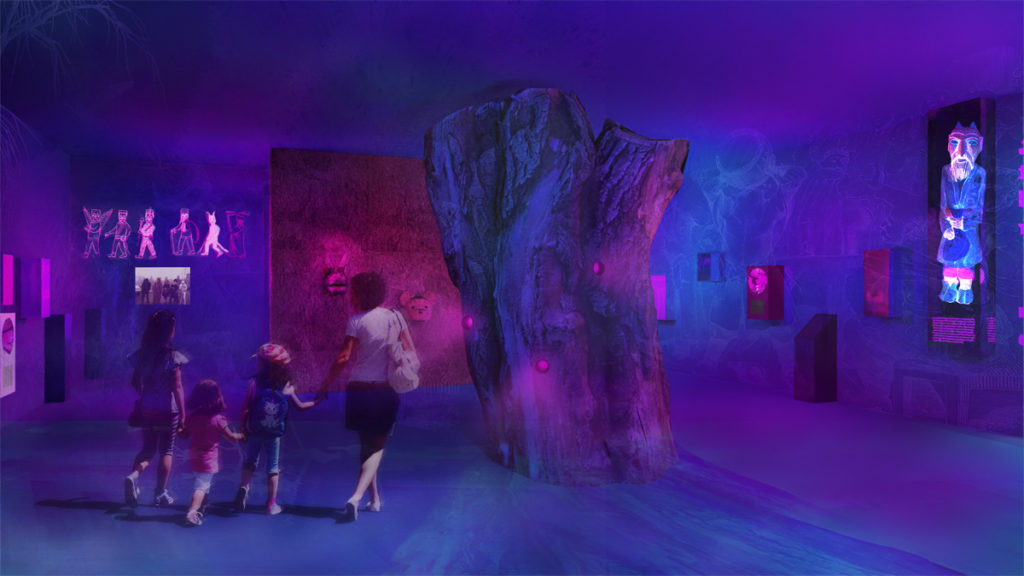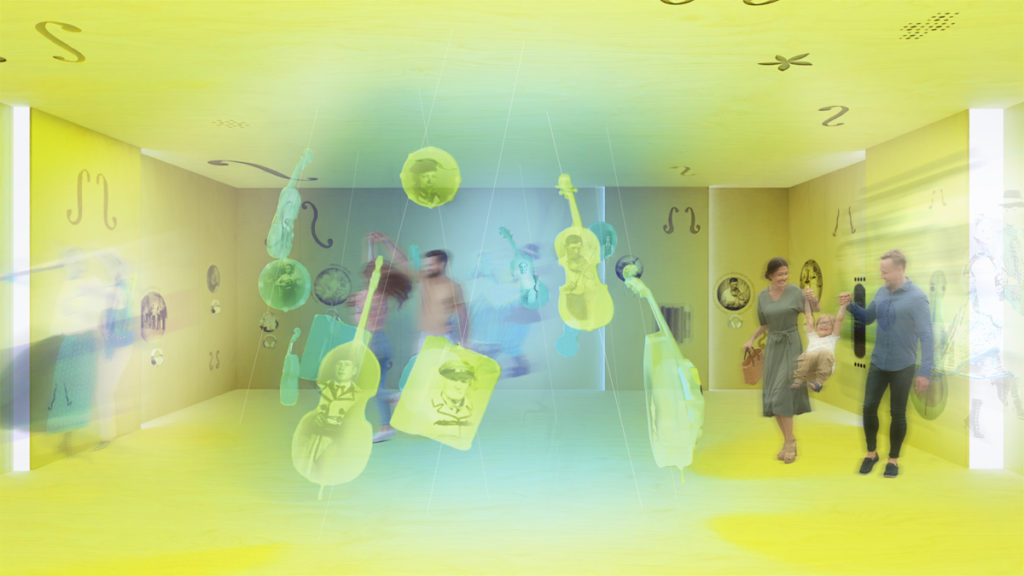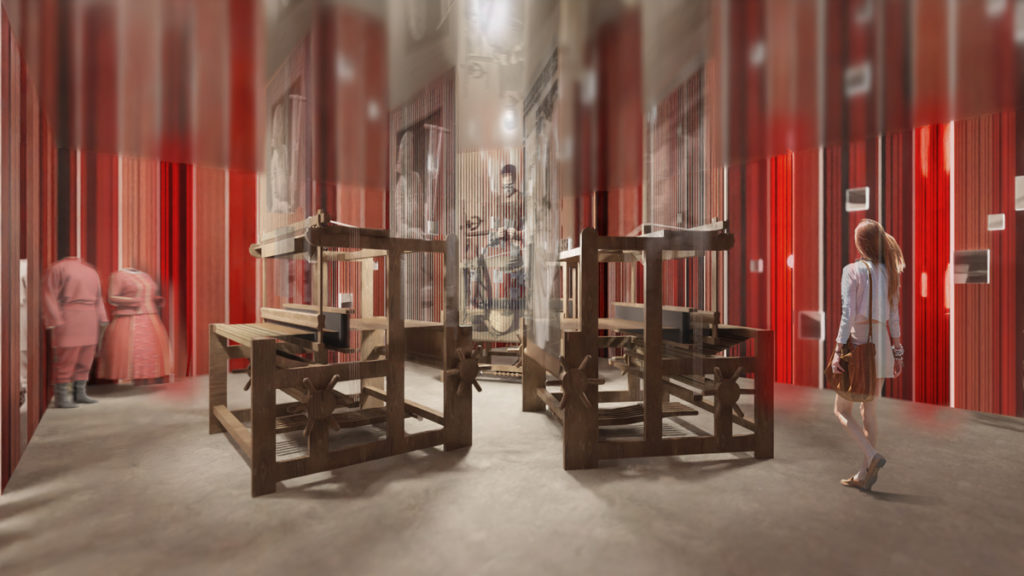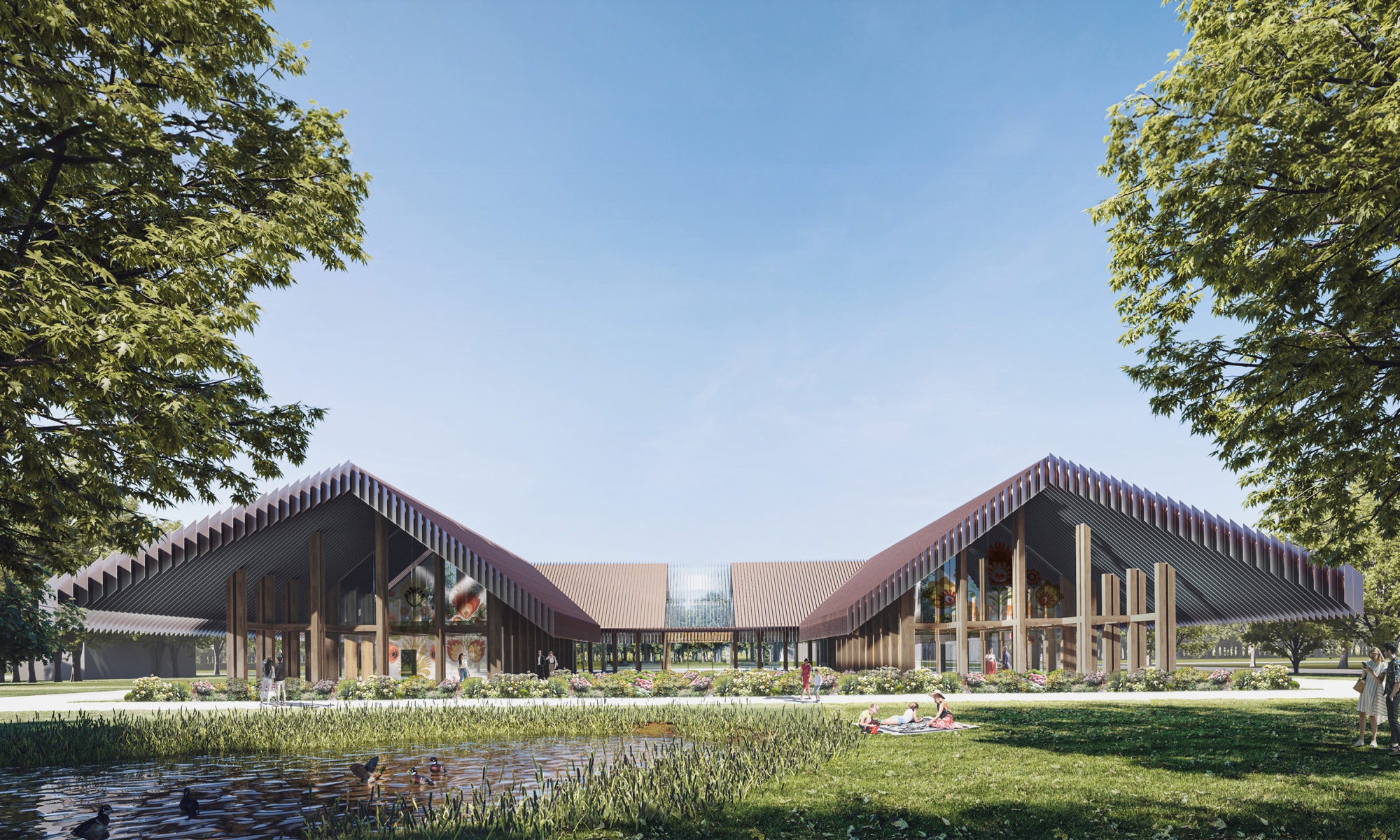
The Folklore Center of the Łódź Voivodeship in Sieradz
A 4-story building with a usable area of 2440 square meters has been designed in a passive standard. The project is a result of a contemporary, minimalist interpretation of rural architecture in the Łódź region. “In a creative way, we referred to the vibrant and rich tradition of the lands of the Łódź Voivodeship, adapting it to the needs of today’s audience,” says Mirosław Nizio, the project’s author.
Nizio Design International has designed also the permanent exhibition project. It will tell the story of the rich local cultural tradition, divided into 4 ethnographic regions. “By combining contemporary exhibition techniques with the art of craftsmanship – carpentry, weaving, paper cutting – we aimed to ensure that the narrative of the Center would address all the senses of the visitors and thus introduce them to the fascinating universe of folk culture,” adds the architect.
Local Identity
The geometric form of the concept started from symmetrically drawn lines connecting the building to important urban points in Sieradz. As a result, a square plan intersected by two axes was created. This refers to the art of creating folk paper cutouts based on geometry, symmetry, and the repetitive rhythm of vertical and horizontal arrangements.
In this way, a structure consisting of four interconnected modules and a centrally located courtyard encouraging social interactions and animated activities emerged. The layout may evoke an “okólnik” – a type of rural development typical of construction in the Łódź region since the 19th century. The dominant feature of the structure will be a roof made of characteristic “razor blades” covering all building modules. Lifting the roof and supporting it on tall, wooden pillars will give the building lightness and openness. The pillars refer to rural architecture through the use of natural materials and the symbolic representation of traditional joinery characteristic of regional carpentry art. Additionally, the roof will create overhangs on the outer perimeter of the building, resulting in additional covered space for use during cultural events.
The glazed facade opens the interior of the Center to its natural surroundings. The idyllic nature outside harmoniously juxtaposes with modernity. The vibrant life within the building during workshops, animated activities, and educational sessions will be visible from afar, especially in the evening when illuminated interiors become a magnet attracting passersby.
Fairy tales and legends, the art of craftsmanship, the liveliness of music
An integral complement to the architecture of the building will be the exhibition. Divided into four galleries, the exhibition presents the themes of each ethnographic region: Łęczyckie, Rawsko-Opoczyńskie, Łowickie, and Sieradzkie. The narrative is based on the essential archetypes of the culture of each region, as well as references to the cyclical rhythm of nature and the ritual year. The “Łęczyckie” Gallery will intrigue visitors with the fairy-tale nature of folklore, including through mapping and multimedia projections with characters from legends. The “Rawsko-Opoczyńskie” Gallery will capture the atmosphere of rural dance parties with their liveliness and the hypnotic character of traditional music. The main theme of the “Łowickie” Gallery is folk paper cutting. A centrally located artistic installation will refer to its typical features: symmetry and the repetition of elements. Meanwhile, three wooden weaving workshops in the “Sieradzkie” Gallery will symbolically emphasize the communal nature of folk creators’ work. Each gallery will appeal to different senses of the visitors and will be distinctly marked by a visual layer – each will have an assigned dominant color.
Versatility of the Facility
On the ground floor, there are planned: service area (cash registers, information and security point, souvenir shop, café with buffet), ballet hall, workshop area designed for dance, culinary, and handicrafts classes, including the use of clay and paper cutting. On the next level, there will be an office area. Level -1 will house the permanent exhibition. Level -2 will include a conference hall, a performance hall with technical facilities, dressing rooms for artists, a foyer with a buffet, cloakroom, and toilets.
The investor is the Marshal of the Łódź Voivodeship. The scope of work by Nizio Design International included: multidisciplinary architectural concept of the building and permanent exhibition, construction and executive project, land development project, executive project of the permanent exhibition, and visual identity project.
